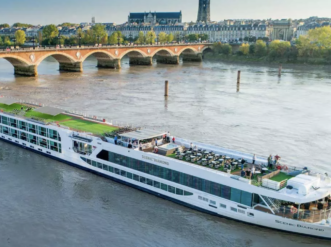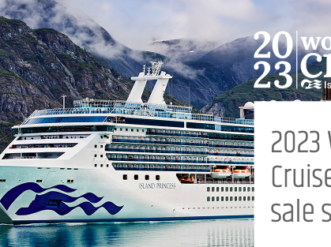Top 5 Dive Destinations Around The Globe
February 28, 2020Whether you’re a pro at scuba-diving or just starting out, everyone can agree that there’s nothing quite like life beneath the surface of the water; a whole other world, you might say. Thankfully there is more water than land on this big blue globe and millions of gallons to explore. So I’m just going to dive right in and present to you 5 bucket-list worthy dive spots that will make you wish you had fins.
Grand Cayman, Cayman Islands
Grand Cayman offers dive sites for both beginner and experienced divers alike; from easy shore dives to advanced wall dives. This magnificent area is best known for Stingray City. If you’ve never visited before, locals suggest you make the 12-foot dive to pet the underbellies and wings of these magnificent creatures. If you’re a shipwreck buff, Grand Cayman is home to the 76-meter former U.S. Navy Submarine Vessel, USS Kittiwake, that sits upright just 64 feet deep. Another fascinating wreck lies in the neighboring Cayman Brac. The 100-meter Russian warship, Captain Keith Tibbets (which was built for the Cuban navy) was broken into two parts by Hurricane Ivan, giving the impression that its fate was much worse than just being scuttled.
Belize
Next to the Great Barrier reef, Belize boasts the second largest barrier reef in the world and is by all accounts, just as beautiful as its larger counterpart. Belize is a small country located between Mexico and Guatemala with over 400 islands and almost 300 km of coastline. The biggest draw for many divers to this area is the 450-foot-deep Blue Hole, which is home to sharks, huge tuna, sailfish, swordfish, octopus, stalagmites, and stalactites. In addition, the marine park of Ambergris Cay is home to an abundance of marine life such as barracuda, corals, grouper, and snapper. Much like Grand Caymen, Belize has an area known as Shark Ray Alley where you’ll see an abundance of nurse sharks and stingrays. Locals suggest other notable sites worthy of exploration including Half Moon Cay, Glover’s Reef Atoll, Hol Chan Marine Reserve.
Galapagos Islands, Ecuador
Located between Columbia and Peru, Ecuador is a small country with big diving opportunities. This area of the ocean is home to numerous species of marine life found nowhere else in the world. The standouts for this area include El Arco and Isabel Island. El Arco is located off Darwin Island and is renowned as one of the best dive sites in the world. Here you will be given the big show of all the mysterious and unique creatures that are exclusive to this area including Galapagos sharks, manta rays, hammerheads, and the massive (but very docile) whale sharks. Isabel Island is a famous spot where divers can swim with penguins and sea lions who according to locals are never too shy to get up close and personal. Those with an exceptionally adventurous streak (and maybe a serious lack of fear) will enjoy Roca Redonda; an underwater volcano swarming with sharks.
Egypt, Red Sea
While you may associate Egypt with pyramids, it is also considered the top dive destination in the world. The reason being that there is an abundance of marine life unique to this location, in addition, this area saw heavy naval combat during World War 2 and suffice to say there are many wrecks. No matter which area you dive in the Red Sea, you are guaranteed to see remarkable marine life such as like eels, stingrays, manta rays, barracudas, dolphins, sharks of all kinds as well as some of the most breathtaking coral reef in the world. If you’re more of a history buff, the wreck of the Thistlegorm is the most popular. The Thistlegorm is a 128-meter British transport ship that was sunk by a German air attack in 1941. Divers to this wreck often recount the amazing artifacts still intact at the bottom of the sea including tanks, army trucks, jeeps, motorbikes, and artillery.
Australia, SS Yongala
Rounding out our list is a dive specifically dedicated to a shipwreck. The SS Yongala is considered one of Australia’s best wreck dives and lies within the Great Barrier Reef Marine Park. It’s considered the most intact historic shipwrecks in the world with a massive assortment of historic artifacts littering the debris filed. On March 23, 1911, the luxury passenger steamship sank en route to Townsville during a cyclone. When the SS Yongala didn’t appear in Townsville on schedule, it was assumed that it sought shelter from the storm and was just late to arrive. It wasn’t until three other ships arrived in Townsville that the SS Yongala was declared missing on March 26th. Although debris washed ashore, there were no survivors and the only body that searchers found was that of Moonshine, a popular racehorse who’d been aboard when the boat sank. The ship’s final resting place remained unknown for decades until 1958. The marine life that makes the SS Yongala home is a wide variety including giant groupers (the size of a small car), Eagle and Manta rays, massive sea turtles, sea snakes, Barracudas, and various species of sharks (including rare sightings of Bull and Tigers). It is also a very popular spot for whale encounters with Minke and Humpbacks.
Ready to take the plunge? We can help! Contact us or any of our experience specialists, and let us help you arrange an adventure of a lifetime!
Sean Mitchell
Archives
- October 2021
- March 2021
- February 2021
- December 2020
- September 2020
- August 2020
- July 2020
- June 2020
- March 2020
- February 2020
- January 2020
- December 2019
- November 2019
- October 2019
- September 2019
- August 2019
- July 2019
- June 2019
- May 2019
- April 2019
- March 2019
- February 2019
- May 2018
- April 2018
- January 2018
- December 2017
- November 2017
- October 2017
- June 2017
- May 2017
- April 2017
- February 2017
- November 2016
- April 2016
- February 2016
- January 2016
- December 2015
- July 2015
- April 2015
- January 2015
- December 2014
- August 2014
- July 2014
- February 2014
- November 2013
- September 2013
- July 2013
- April 2013
- February 2013
- December 2012
- April 2012
- February 2012




